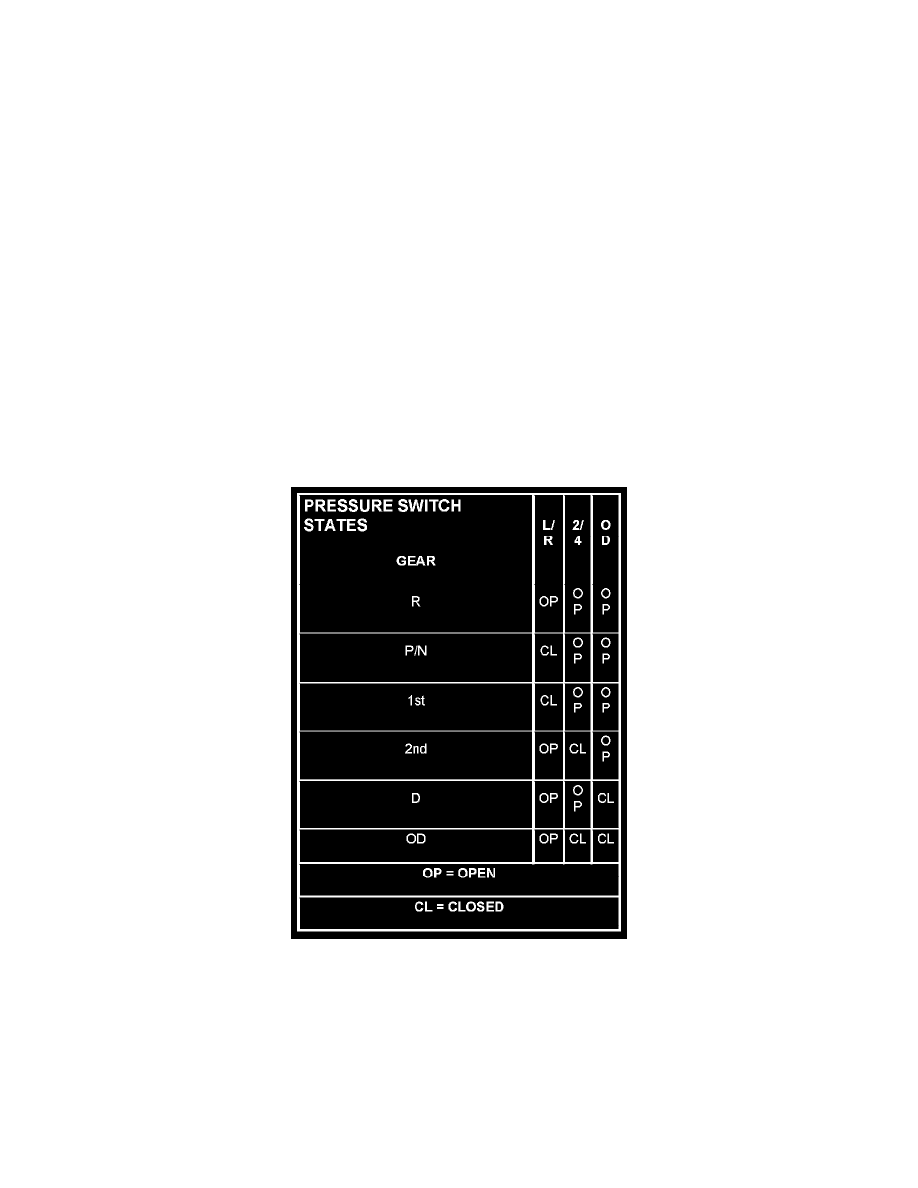Sebring Sedan L4-2.4L (2007)

Overdrive Solenoid: Description and Operation
Operation
OPERATION
SOLENOIDS
The solenoids receive electrical power from the Transmission Control Relay through a single wire. The PCM/TCM energizes or operates the solenoids
individually by grounding the return wire of the solenoid needed. When a solenoid is energized, the solenoid valve shifts, and a fluid passage is opened
or closed (vented or applied), depending on its default operating state. The result is an apply or release of a frictional element.
The 2/4 and UD solenoids are normally applied, which by design allow fluid to pass through in their relaxed or "off" state. This allows transaxle limp-in
(P,R,N,2) in the event of an electrical failure.
The continuity of the solenoids and circuits are periodically tested. Each solenoid is turned on or off depending on its current state. An inductive spike
should be detected by the PCM/TCM during this test. It no spike is detected, the circuit is tested again to verify the failure. In addition to the periodic
testing, the solenoid circuits are tested if a speed ratio or pressure switch error occurs.
PRESSURE SWITCHES
The PCM/TCM relies on three pressure switches to monitor fluid pressure in the L/R, 2/4, and OD hydraulic circuits. The primary purpose of these
switches is to help the PCM/TCM detect when clutch circuit hydraulic failures occur. The range for the pressure switch closing and opening points is
11-23 psi. Typically the switch opening point will be approximately one psi lower than the closing point. For example, a switch may close at 18 psi and
open at 17 psi. The switches are continuously monitored by the PCM/TCM for the correct states (open or closed) in each gear as shown in the following
chart:
Pressure Switch States
A Diagnostic Trouble Code (DTC) will set if the PCM/TCM senses any switch open or closed at the wrong time in a given gear.
The PCM/TCM also tests the 2/4 and OD pressure switches when they are normally off (OD and 2/4 are tested in 1st gear, OD in 2nd gear, and 2/4 in
3rd gear). The test simply verifies that they are operational, by looking for a closed state when the corresponding element is applied. Immediately after a
shift into 1st, 2nd, or 3rd gear with the engine speed above 1000 rpm, the PCM/TCM momentarily turns on element pressure to the 2/4 and/or OD clutch
circuits to identify that the appropriate switch has closed. If it doesn't close, it is tested again. If the switch fails to close the second time, the appropriate
Diagnostic Trouble Code (DTC) will set.
